Color temperature applications
Lighting
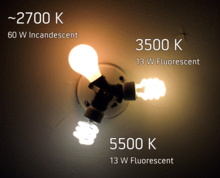
Color temperature comparison of common electric lamps
For lighting building interiors, it is often important to take into account the color temperature of illumination. For example, a warmer (i.e., lower color temperature) light is often used in public areas to promote relaxation, while a cooler (higher color temperature) light is used to enhance concentration in offices.[8]
CCT dimming for LED technology is regarded as a difficult task, since binning, age and temperature drift effects of LEDs change the actual color value output. Here feedback loop systems are used for example with color sensors, to actively monitor and control the color output of multiple color mixing LEDs.[9]
Aquaculture[edit]
In fishkeeping, color temperature has different functions and foci, for different branches.
- In freshwater aquaria, color temperature is generally of concern only for producing a more attractive display.[citation needed] Lights tend to be designed to produce an attractive spectrum, sometimes with secondary attention to keeping plants alive.
- In a saltwater/reef aquarium, color temperature is an essential part of tank health. Within about 400 to 3000 nanometers, light of shorter wavelength can penetrate deeper into water than longer wavelengths (see Electromagnetic absorption by water),[10][11][12] providing essential energy sources to the algae hosted in (and sustaining) coral. This is equivalent to an increase of color temperature with water depth in this spectral range. Because coral, typically living in shallow water, receives intense, direct tropical sunlight, the focus was once on simulating this with 6,500 K lights. Higher temperature light sources have become more popular, first with 10,000 K and more recently 16,000 K and 20,000 K.[citation needed] Meanwhile, actinic lighting is used to make the somewhat fluorescent colors of many corals and fish "pop", creating brighter "display" tanks.
Digital photography[edit]
In digital photography, color temperature is sometimes used interchangeably with white balance, which allow a remapping of color values to simulate variations in ambient color temperature. Most digital cameras and RAW image software provide presets simulating specific ambient values (e.g., sunny, cloudy, tungsten, etc.) while others allow explicit entry of white balance values in kelvins. These settings vary color values along the blue–yellow axis, while some software includes additional controls (sometimes labeled tint) adding the magenta–green axis, and are to some extent arbitrary and subject to artistic interpretation.[13]
Photographic film[edit]
|
|
This section does not cite any references or sources. Please help improve this section by adding citations to reliable sources. Unsourced material may be challenged and removed. (June 2012) |
Photographic emulsion film sometimes appears to exaggerate the color of the light, as it does not adapt to lighting color as human visual perception does. An object that appears to the eye to be white may turn out to look very blue or orange in a photograph. The color balance may need to be corrected while shooting or while printing to achieve a neutral color print.
Photographic film is made for specific light sources (most commonly daylight film and tungsten film), and used properly, will create a neutral color print. Matching the sensitivity of the film to the color temperature of the light source is one way to balance color. If tungsten film is used indoors with incandescent lamps, the yellowish-orange light of the tungsten incandescent lamps will appear as white (3,200 K) in the photograph.
Filters on a camera lens, or color gels over the light source(s) may also be used to correct color balance. When shooting with a bluish light (high color temperature) source such as on an overcast day, in the shade, in window light or if using tungsten film with white or blue light, a yellowish-orange filter will correct this. For shooting with daylight film (calibrated to 5,600 K) under warmer (low color temperature) light sources such as sunsets, candlelight or tungsten lighting, a bluish (e.g., #80A) filter may be used.
If there is more than one light source with varied color temperatures, one way to balance the color is to use daylight film and place color-correcting gel filters over each light source.
Photographers sometimes use color temperature meters. Color temperature meters are usually designed to read only two regions along the visible spectrum (red and blue); more expensive ones read three regions (red, green, and blue). However, they are ineffective with sources such as fluorescent or discharge lamps, whose light varies in color and may be harder to correct for. Because it is often greenish, a magenta filter may correct it. More sophisticated colorimetry tools can be used where such meters are lacking.
Desktop publishing[edit]
|
|
This section does not cite any references or sources. Please help improve this section by adding citations to reliable sources. Unsourced material may be challenged and removed. (June 2012) |
In the desktop publishing industry, it is important to know a monitor’s color temperature. Color matching software, such as Apple's ColorSync for Mac OS, will measure a monitor's color temperature and then adjust its settings accordingly. This enables on-screen color to more closely match printed color. Common monitor color temperatures, along with matching standard illuminants in parentheses, are as follows:
- 5,000 K (D50)
- 5,500 K (D55)
- 6,500 K (D65)
- 7,500 K (D75)
- 9,300 K.
D50 is scientific shorthand for a standard illuminant: the daylight spectrum at a correlated color temperature of 5,000 K. Similar definitions exist for D55, D65 and D75. Designations such asD50 are used to help classify color temperatures of light tables and viewing booths. When viewing a color slide at a light table, it is important that the light be balanced properly so that the colors are not shifted towards the red or blue.
Digital cameras, web graphics, DVDs, etc., are normally designed for a 6,500 K color temperature. The sRGB standard commonly used for images on the Internet stipulates (among other things) a 6,500 K display whitepoint.
TV, video, and digital still cameras[edit]
|
|
This section does not cite any references or sources. Please help improve this section by adding citations to reliable sources. Unsourced material may be challenged and removed. (June 2012) |
The NTSC and PAL TV norms call for a compliant TV screen to display an electrically black and white signal (minimal color saturation) at a color temperature of 6,500 K. On many consumer-grade televisions, there is a very noticeable deviation from this requirement. However, higher-end consumer-grade televisions can have their color temperatures adjusted to 6,500 K by using a preprogrammed setting or a custom calibration. Current versions of ATSC explicitly call for the color temperature data to be included in the data stream, but old versions of ATSC allowed this data to be omitted. In this case, current versions of ATSC cite default colorimetry standards depending on the format. Both of the cited standards specify a 6,500 K color temperature.
Most video and digital still cameras can adjust for color temperature by zooming into a white or neutral colored object and setting the manual "white balance" (telling the camera that "this object is white"); the camera then shows true white as white and adjusts all the other colors accordingly. White-balancing is necessary especially when indoors under fluorescent lighting and when moving the camera from one lighting situation to another. Most cameras also have an automatic white balance function that attempts to determine the color of the light and correct accordingly. While these settings were once unreliable, they are much improved in today's digital cameras, and will produce an accurate white balance in a wide variety of lighting situations.
Artistic application via control of color temperature[edit]
|
|
This section does not cite any references or sources. Please help improve this section by adding citations to reliable sources. Unsourced material may be challenged and removed. (June 2012) |

The house above appears a light cream during the midday, but seems a bluish white here in the dim light before full sunrise. Note the different color temperature of the sunrise in the background.
Video camera operators can white-balance objects which aren't white, downplaying the color of the object used for white-balancing. For instance, they can bring more warmth into a picture by white-balancing off something light blue, such as faded blue denim; in this way white-balancing can serve in place of a filter or lighting gel when those are not available.
Cinematographers do not "white balance" in the same way as video camera operators; they can use techniques such as filters, choice of film stock, pre-flashing, and after shooting, color grading (both by exposure at the labs and also digitally). Cinematographers also work closely with set designers and lighting crews to achieve the desired effects.
For artists, most pigments and papers have a cool or warm cast, as the human eye can detect even a minute amount of saturation. Gray mixed with yellow, orange or red is a "warm gray". Green, blue, or purple, create "cool grays". Note that this sense of temperature is the reverse of that of real temperature; bluer is described as "cooler" even though it corresponds to a higher-temperature black body.
 |
| "Warm" gray |
"Cool" gray |
| Mixed with 6% yellow. |
Mixed with 6% blue. |
Lighting designers sometimes select filters by color temperature, commonly to match light that is theoretically white. Since fixtures using discharge type lamps produce a light of considerably higher color temperature thantungsten lamps, using the two in conjunction could potentially produce a stark contrast, so sometimes fixtures with HID lamps, commonly producing light of 6,000–7,000 K, are fitted with 3,200 K filters to emulate tungsten light. Fixtures with color mixing features or with multiple colors, (if including 3,200 K) are also capable of producing tungsten like light. Color temperature may also be a factor when selecting lamps, since each is likely to have a different color temperature.[14]
* Above good text are from wikipedia.org




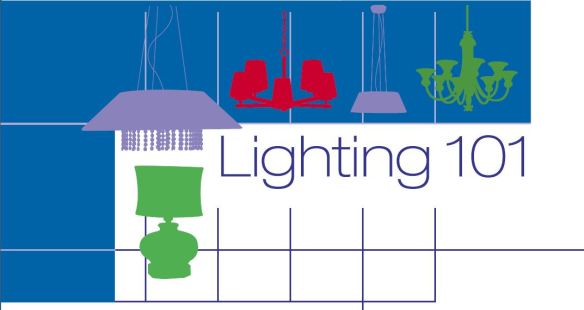

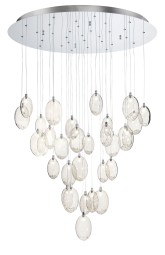
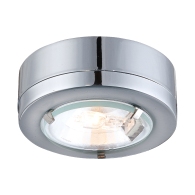
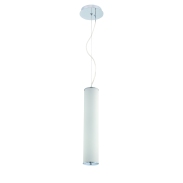












 le.
le.







